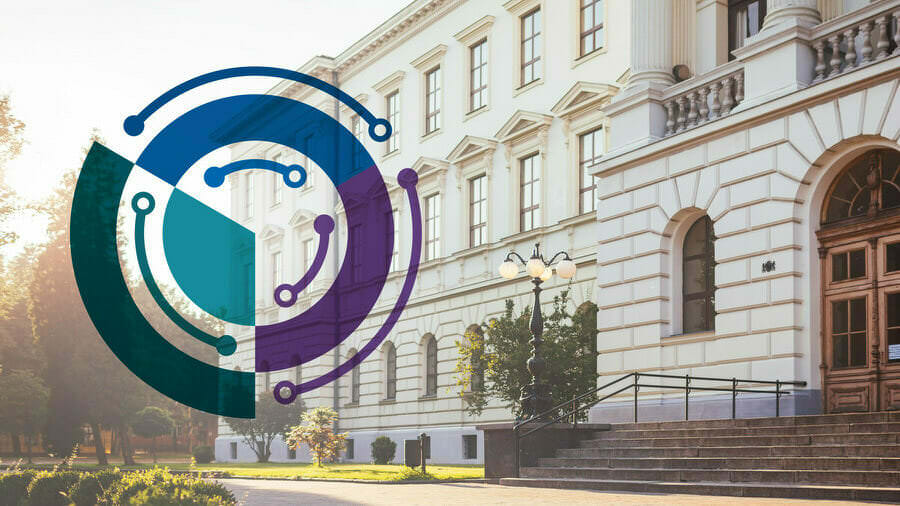
Data Governance and Continuous Improvement: Lessons Learned for Best Practice
This content was previously published by Campus Labs, now part of Anthology. Product and/or solution names may have changed.
Recently we’ve explored the notion of employing data governance as a mechanism to guide data-related policies and practices in support of institutional effectiveness. In pursuing data stewardship, data infrastructure, and data fluency, we strive to engage stakeholders institution-wide in effective, actionable usage and understanding of data. We recognize that this may be a tall order, so let’s pause and consider best practices we’ve observed amongst our Member Campuses who are effectively engaged in a data governance model.
Data Stewardship
Best Practice: Living the Strategic Plan
Academic institutions are often founded upon the pursuit of knowledge and understanding, and those of us who work in this realm tend toward being curious and eager to explore information. While well-intentioned, this curiosity can easily veer a data governance team into never-ending digressions, exploring each individual members’ agendas, biases, or research initiatives.
Data stewardship steps away from the more common practice of transactional leadership which prioritizes compliance, and instead seeks to provide consideration for how individual priorities synthesize together for a collective good. Data stewards are transformational leaders within the institution who can guide data governance efforts so that they are operating from a set of shared priorities – and, fortunately, these priorities have often already been explicitly laid out by an institution’s strategic plan.
The process of developing this strategic plan may have taken months, or even years, depending on the campus. Effective data stewards recognize and honor this undertaking by using the strategic plan as the north star by which they orient both functional and technical processes and practices. When done well, this allows for campus-wide buy-in to the data governance process because motivation is born not from a top-down imposition where individuals must “get in line”, but rather from a mission-centric plan where individuals are a trusted part of a culture with a shared vision.
Data Infrastructure
Best Practice: Establishing a Data Management Plan
It may be helpful to pause here and recall that our rationale in undertaking this data governance process is to live the process of continuous improvement at our institution. We need to remember that this process is cyclical. Traditional, linear, project-focused approaches to IT will not work, as the data is never truly “finished”; rather, it is perpetually reflected and iterated upon. This means that our technical stakeholders need to be engaged throughout the data governance process alongside their functional counterparts.
Just as a strategic plan can orient our stewardship, a data management plan can orient our infrastructure. Consider a helpful model for what ought to be included within this plan, as well as descriptions for what must be considered at each stage of designing the data management process. The reality is that federal funding agencies increasingly insist on transparent data management plans as conditions of their funding (a helpful list of these agencies and their guidelines is available through NC State’s Library System here). This quickly escalates data management plans from a space of “nice to have” to “critically important.”
Establishing a data management plan early in our data governance process also allows us to provide a frank analysis of our readiness for the process, both explicitly (“What data is available?”) and implicitly (“What data do we use to define retention?”). We explored this notion of readiness in our recent podcast “Keys to Data-informed Decision Making: Data Readiness, Data Governance, and Data Ethics” where we discussed the reality that acting prematurely may jeopardize the entirety of the project at its earliest stage. While intimidating, taking time to consider infrastructure at this early stage helps to ensure that technical and functional expectations are clearly established early on and that a foundation is in place for federal funders where and when appropriate – and, the good news is, this is not a process your campus needs to handle on its own. Campus Labs offers professional services such as data auditing so that your infrastructure can rest upon a sound data management plan.
Data Fluency
Best Practice: Pairing Data Governance with a Communications Plan
The continuous improvement cycle carries with it an emphasis on growth, yet this type of change can be perceived as disruptive or threatening to established, entrenched practices and processes. The opportunity for misinterpretation or anxiety may be high amongst campus stakeholders who fear that data will be used punitively against them. Unfortunately, this anxiety may only escalate if these stakeholders are lacking in data fluency skills.
Being explicit and transparent about the intention of continuous improvement and data governance allows for some level of influence over this anxiety, so pairing this endeavor with a communications plan provides for this. And, if our suggested data stewardship practice is in place, the institution’s strategic plan can again be invoked as the rationale behind the undertaking. If campus stakeholders were involved in the development of that plan, all the better – the “why” behind developing data fluency is to ensure that we are “living the plan.”
As this communications plan is developed, consider the following questions as they align to the continuous improvement cycle:
- Plan: What needs to be communicated initially in order to establish the value of this process?
- Do: What will my data collectors need to know how to do? Will they need support for something that was not explicitly part of their professional training?
- Check: What workshops or professional development opportunities can we offer as we live this process? How can we strive to be collaboration-driven, rather than compliance-driven?
- Act: How can stakeholders share their findings and engage in decision making centered around their data?
Data stewardship, infrastructure, and fluency are each critical to a successful pairing of data governance with continuous improvement. While these best practices may take time, pausing to invest in them early on will provide dividends as your institution grows and utilizes its data ecosystem.
